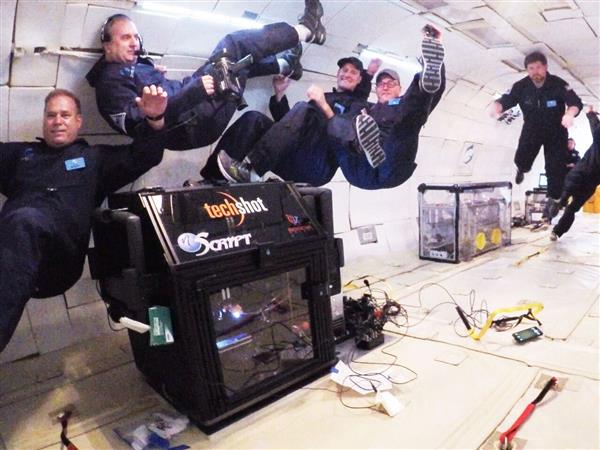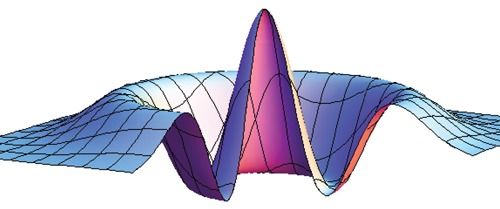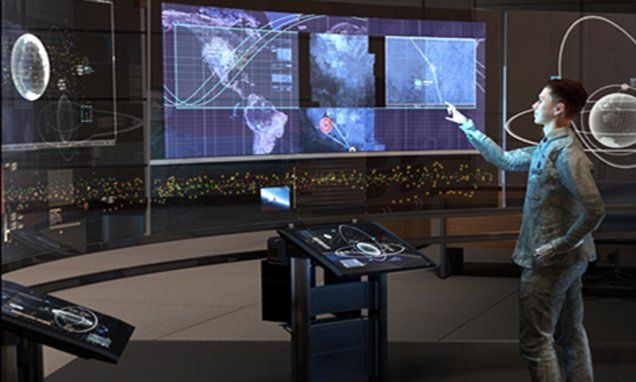Page 11039
Jun 21, 2016
Techshot accomplishes 3D bioprinting in zero gravity
Posted by Klaus Baldauf in categories: 3D printing, biotech/medical, space travel
NASA contractor Techshot have become the first to 3D print a heart structure in zero gravity using human stem cells. Together with 3D bioprinter developers nScrypt and bio-ink specialists Bioficial Organs they have successfully printed cardiac and vascular structures, and believe this could further 3D bioprinting efforts on solid ground.
Techshot have been developing technologies for NASA, SpaceX and other partners for more than 25 years. They have tech aboard the International Space Station among other places, and are also known for combining their aerospace specialism with the medical sector, having built the Bone Densitometer zero-gravity X ray machine.
NScrypt are responsible for building the world’s first 3D bioprinter back in 2003, and have been working on micro-dispensing and 3D printing systems for years. Also in the team was Bioficial Organs, which has grown out of the Cardiovascular Innovation Institute in Louisville, Kentucky, and specializes in organ 3D printing innovations.
Jun 21, 2016
Voice: How To Architect A Cognitive Future For Business
Posted by Klaus Baldauf in categories: biotech/medical, business, computing, education, finance, mobile phones, neuroscience, robotics/AI
Whether referred to as AI, machine learning, or cognitive systems, such as IBM Watson, a growing cadre of business leaders is embracing this opportunity head on.
That’s because their consumers are using cognitive applications on a daily basis — through their phones, in their cars, with their doctors, banks, schools, and more. All of this consumer engagement is creating 2.5 quintillion bytes of data every day. And thanks to IT infrastructures designed for cognitive workloads — that can understand, reason, and learn from all this data — organizations and entire industries are transforming and reaping the benefits.
What’s important to remember is that this sci-fi-turned-reality-show of cognitive computing cannot happen without the underlying systems on which the APIs, software, and services run. For this very reason, today’s leading CIOs are thinking differently about their IT infrastructure.
Continue reading “Voice: How To Architect A Cognitive Future For Business” »
Jun 21, 2016
You may soon be dating a sex doll
Posted by Shailesh Prasad in categories: internet, robotics/AI, sex
Your next sex-buddy may be made of silicone, designed to your specifications and willing to put up with even your most outrageous quirks – much to Noel Sharkey’s chagrin. The emeritus professor of robotics at Sheffield University in the UK is blowing up over the proliferation of realistic sex dolls.
According to the Daily Mail, Sharkey and other academics are voicing concern about the dolls and a new generation of sex-bots that may one day have full-blown speech recognition.
At that point, the profs warn, fabricated mates may become as prevalent as Internet porn and wreak havoc with our love lives. “What if it’s your first time? Your first relationship?” Sharkey asks. “What [will] you think a man or woman is? It will get in the way of real life, stopping people from forming relationships with normal people.”
Jun 21, 2016
Tech Companies Mull Storing Data in DNA
Posted by Karen Hurst in categories: biotech/medical, information science
As conventional storage technologies struggle to keep up with big data, interest grows in a biological alternative.
I wanted to share this article because I am hearing this brought up again a lot lately across the US and the current political climate plus if we have a Trump Whitehouse what could this mean for big tech?
We’re not creating the new businesses we should be, and these giants have to be broken up.
Jun 21, 2016
IARPA Wants To Stop You From Spoofing Facial Scans and Fingerprints
Posted by Karen Hurst in category: privacy
The intelligence community’s R&D group wants technology that can detect attempts to evade biometric collection.
Random Idea on Inequality and an Attempt to Fix it:
******A one-time Mandatory 50% Giving-Pledge Commitment by the Worlds Billionaires (while they are still alive).******
The massive assets collected thru this one-time Plegde. Should then be managed by an extremely broad team which is multi-ethnic, multi-academic, gender diverse and with members from all ranks of society ect ect.
How the assets attained thru this Mandatorry Giving Pledge will be used, will partly be decided by this extremly broad team. Every step and descision this team makes will be constantly open-sourced on the Internet 24/7.
Hopefully then we can make a step to making the World a better place for us all and our environment.
Jun 20, 2016
Viewpoint: Classical Simulation of Quantum Systems?
Posted by Karen Hurst in categories: computing, quantum physics
Nice.
Richard Feynman suggested that it takes a quantum computer to simulate large quantum systems, but a new study shows that a classical computer can work when the system has loss and noise.
The field of quantum computing originated with a question posed by Richard Feynman. He asked whether or not it was feasible to simulate the behavior of quantum systems using a classical computer, suggesting that a quantum computer would be required instead [1]. Saleh Rahimi-Keshari from the University of Queensland, Australia, and colleagues [2] have now demonstrated that a quantum process that was believed to require an exponentially large number of steps to simulate on a classical computer could in fact be simulated in an efficient way if the system in which the process occurs has sufficiently large loss and noise.
Continue reading “Viewpoint: Classical Simulation of Quantum Systems?” »
Jun 20, 2016
US military bosses reveal plans for holographic ‘space command’
Posted by Karen Hurst in categories: military, satellites
The US military has revealed plans for a hi-tech holographic ‘space command’.
It would allow military bosses to see in an instant where everything from enemy satellites to orbiting space stations were.
DARPA says they system will help the monitor enemy threats in space.
Continue reading “US military bosses reveal plans for holographic ‘space command’” »

















